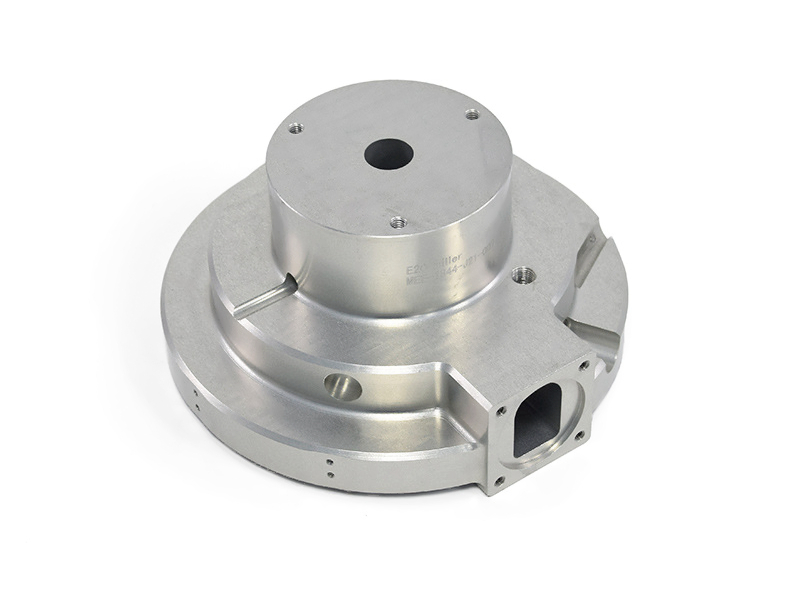Innovative CNC Milling Solutions for High-Strength Carbon Steel Parts in Oil and Gas Equipment
Introduction
The Oil and Gas industry demands highly reliable components capable of enduring extreme pressures, corrosive fluids, and elevated temperatures. High-strength carbon steel parts are vital due to their exceptional strength, durability, and resistance to fatigue, making them ideal for critical equipment such as drill collars and valves.
Advanced CNC milling services have become essential for precisely manufacturing these complex components. CNC milling ensures consistent accuracy, tight tolerances, and intricate geometries, optimizing the performance and reliability of carbon steel parts used extensively throughout the oil and gas sector
Carbon Steel Materials
Material Performance Comparison
Material Grade | Tensile Strength (MPa) | Yield Strength (MPa) | Hardness (HRC) | Typical Applications | Advantage |
|---|---|---|---|---|---|
620-850 | 450-585 | 22-32 | Pump shafts, couplings | Cost-effective, good machinability (Machinability Rating: 64%) | |
655-979 | 415-655 | 28-34 | Valve parts, connectors | Excellent toughness (Impact Strength >95 J/cm²), good fatigue resistance | |
745-1860 | 470-1515 | 28-38 | Drill collars, heavy-duty gears | Superior strength (Ultimate tensile strength up to 1860 MPa), high fatigue life | |
700-900 | 490-685 | 24-32 | Gear components, shafts | Balanced mechanical properties, high wear resistance (Abrasion resistance rating: 85%) |
Material Selection Strategy
Professional material selection for oil and gas applications should align closely with operational scenarios:
High-pressure and high-stress components: Prefer high-strength alloys like 4340 Steel due to its excellent tensile strength (up to 1860 MPa), fatigue life, and reliability.
Wear-intensive components: Opt for 5140 Steel for its balanced mechanical performance and high wear resistance.
General-purpose applications: Choose 4140 Steel for superior toughness and effective fatigue resistance.
Cost-sensitive applications: Utilize 1045 Steel, offering good machinability and mechanical properties at lower costs.
CNC Milling Processes
Process Performance Comparison
CNC Milling Technology | Dimensional Accuracy (mm) | Surface Roughness (Ra μm) | Complexity Level | Cost Efficiency |
|---|---|---|---|---|
±0.02 | 1.6-3.2 | Medium | High | |
±0.015 | 0.8-1.6 | High | Moderate | |
±0.005 | 0.4-0.8 | Very High | Moderate-Low | |
±0.005-0.02 | 0.4-1.6 | Extremely High | Moderate-Low |
Process Selection Strategy
Optimal CNC milling selection depends on component complexity, precision requirements, and production scale:
Standard geometries, large batch volumes: Use 3-axis milling for excellent cost-efficiency.
Moderate-complexity components: Employ 4-axis milling for improved accuracy and efficient multi-side machining.
Highly intricate components: Opt for 5-axis or multi-axis milling to achieve exceptional dimensional accuracy and superior surface finishes.
Surface Treatment
Surface Treatment Performance
Treatment Type | Corrosion Resistance | Wear Resistance | Temperature Limit (°C) | Typical Applications | Key Features |
|---|---|---|---|---|---|
Up to 100 hours Salt Spray (ASTM B117) | Moderate (up to 55 HRC equivalent) | 250°C | Bolts, small parts | Uniform matte finish; thickness ~0.5-2 μm; minimal dimensional change | |
200-400 hours Salt Spray (ASTM B117) | High (Coefficient of friction ~0.05-0.15) | 350°C | Gears, connectors | Thickness 5-25 μm; excellent anti-galling | |
250-500 hours Salt Spray (ASTM B117) | Excellent (65-70 HRC) | 500°C | Drilling components, valves | Case depth: 0.2-0.6 mm; minimal distortion | |
>1000 hours Salt Spray (ASTM B117) | Moderate-High (45-70 HRC) | 300°C | Valves, couplings | Thickness 5-25 μm; exceptional corrosion protection |
Surface Treatment Selection
Surface treatments should match specific operating conditions:
Severe abrasive environments: Choose Nitriding for high hardness and wear resistance.
Highly corrosive environments: Use Electroplating for superior corrosion protection.
General-purpose components: Apply Phosphating for balanced corrosion and wear resistance.
Quality Control
Quality Control Procedures
Dimensional Accuracy Inspection (CMM, optical comparator).
Surface Quality Verification (profilometers Ra 0.4–3.2 µm).
Mechanical Property Testing (hardness, tensile testing ASTM E8/E8M).
Material Integrity Assessment (UT, MPI for internal/external defects).
Corrosion and Surface Treatment Validation (salt spray tests ASTM B117).
Compliance Documentation and Traceability (API Spec 6A, ASME B31.3, ISO 9001).
Industry Applications
CNC Milled Part Applications
Drill bits and collars require superior strength and durability.
Valves and pumps need precision and reliability.
Connectors and couplings demanding consistent high-pressure performance.
Control system components ensure dependable operation.
Related FAQs:
What are the advantages of CNC milling for carbon steel parts used in the oil and gas industry?
How do I select the appropriate carbon steel grade for oilfield components?
Which CNC milling technology is best for complex geometries in carbon steel?
How can surface treatments improve corrosion and wear resistance of carbon steel parts?
What quality standards must CNC milled parts meet for oil and gas equipment?

